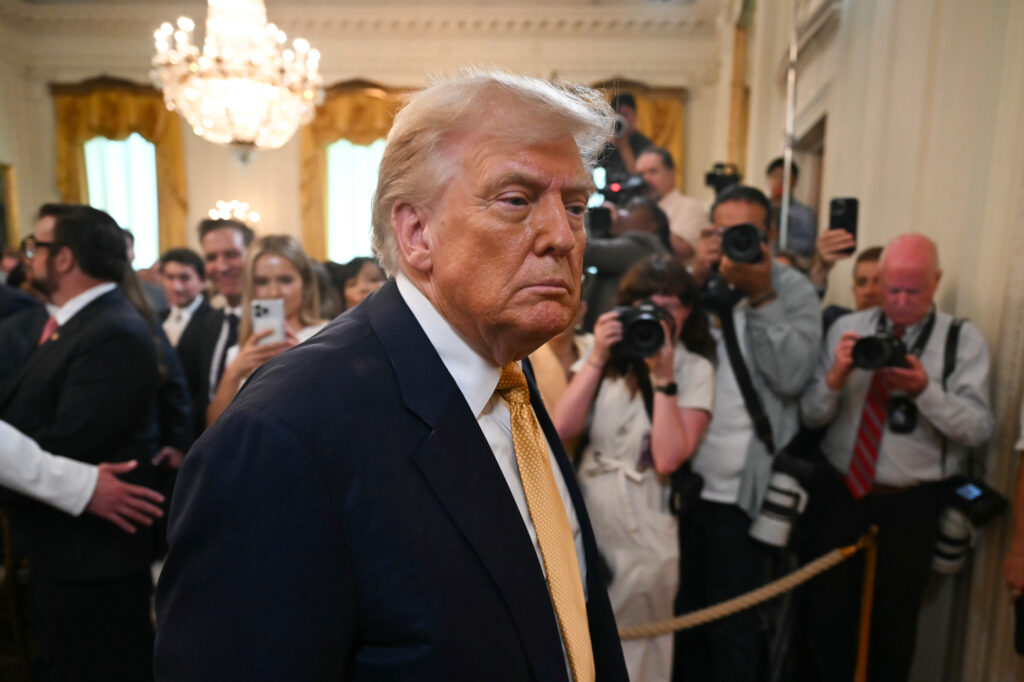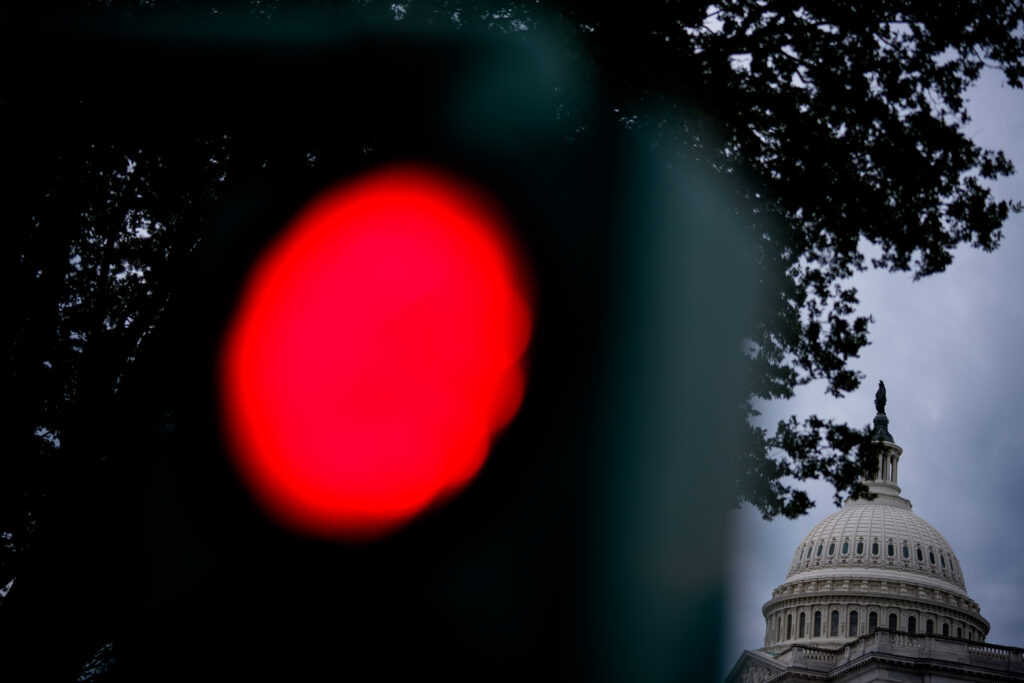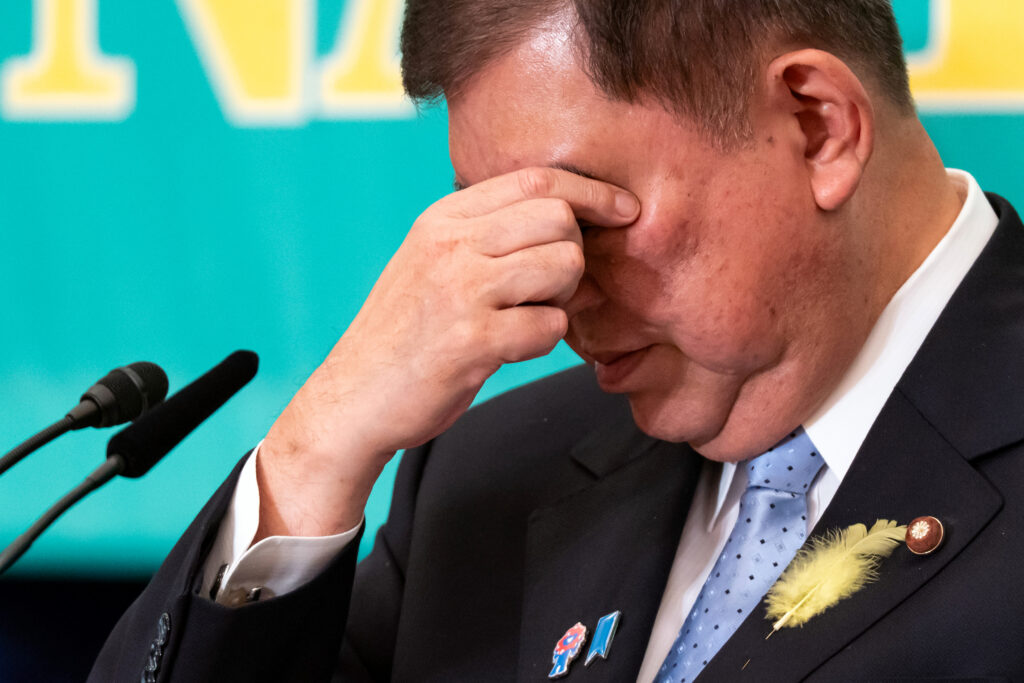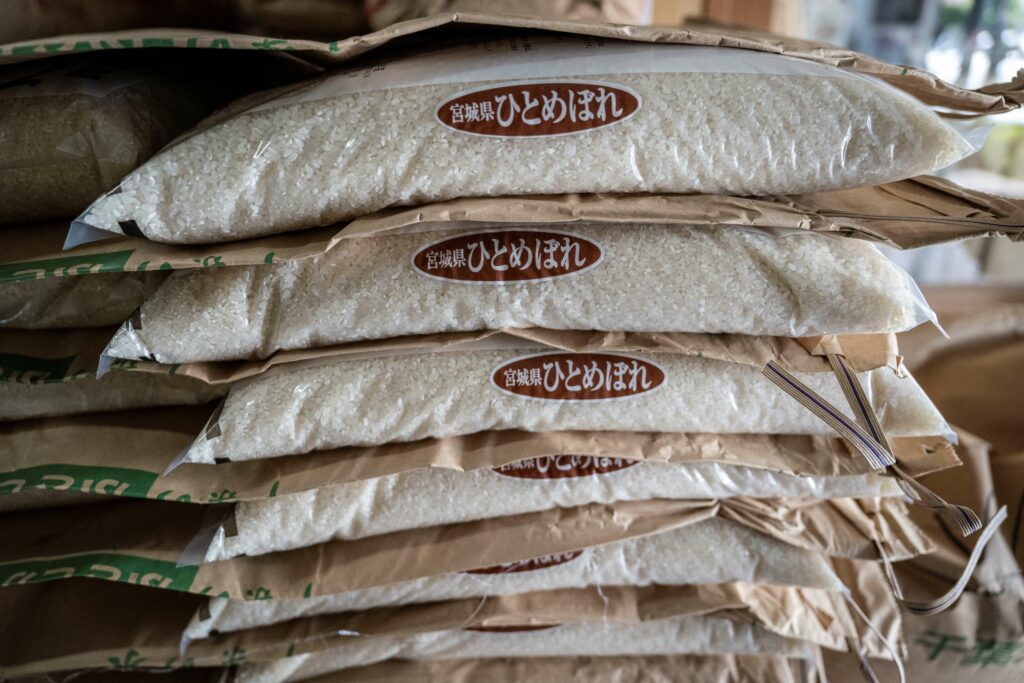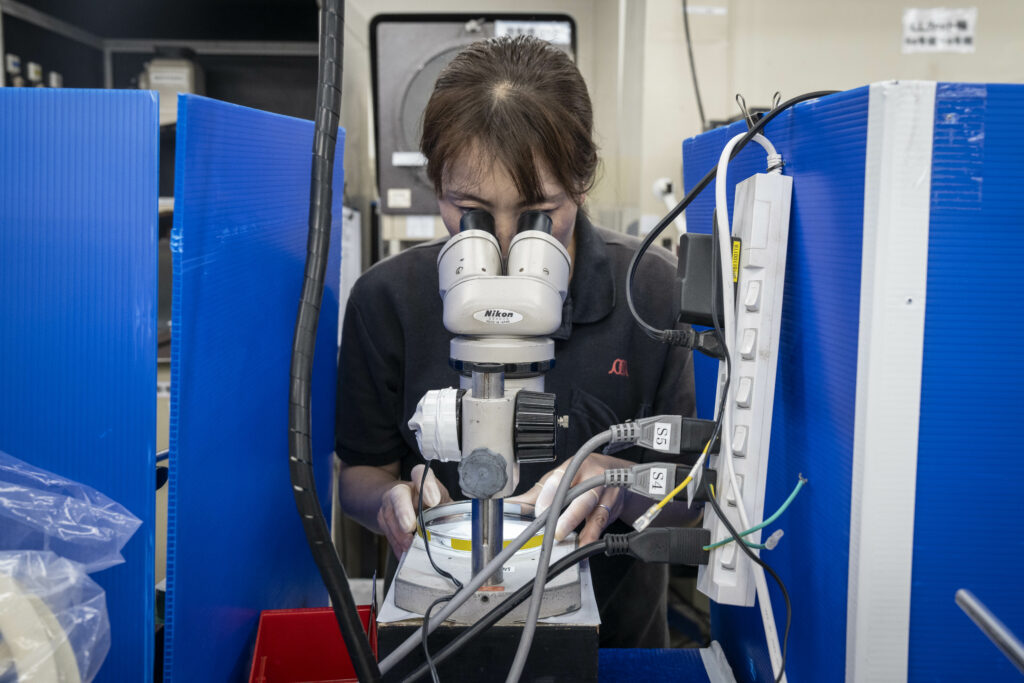Trump menace de poursuivre le WSJ pour un article lui attribuant une lettre salace à Epstein
En porte-à-faux avec une partie de sa base sur l’affaire Epstein, Donald Trump a annoncé jeudi qu’il allait poursuivre le Wall Street Journal pour un article lui attribuant une lettre salace adressée au financier en 2003, le qualifiant de “faux, malveillant et diffamatoire”.Jeffrey Epstein a été retrouvé pendu dans sa cellule à New York le 10 août 2019 avant d’être jugé pour crimes sexuels.”Le président Trump va bientôt poursuivre le Wall Street Journal, News Corp et M. (Rupert) Murdoch”, le magnat des médias propriétaire du groupe, écrit Donald Trump sur son réseau Truth Social, précisant les avoir “personnellement” mis en garde avant la parution de cet article jeudi.”Ils publient quand même un article faux, malveillant et diffamatoire”, déplore-t-il, assurant que “s’il y avait la moindre trace de vérité dans le canular Epstein, cette information aurait été révélée” bien avant par ses adversaires, politiques ou autres.L’article du Wall Street Journal (WSJ) affirme que, pour un livre d’or destiné à Jeffrey Epstein en 2003 à l’occasion de son 50e anniversaire, sa compagne Ghislaine Maxwell avait sollicité plusieurs dizaines de ses proches, dont Donald Trump, alors magnat de l’immobilier.La lettre au nom de Donald Trump, que le journal indique avoir pu consulter, est de caractère salace, comme d’autres dans ce livre d’or. Elle comporte plusieurs lignes de texte dactylographié entourées d’un croquis de femme nue, apparemment tracé au marqueur, précise-t-il.La signature gribouillée du futur président apparaît sous la taille de la femme, évoquant une toison pubienne, souligne le WSJ.Rupert Murdoch se trouvait dimanche dans la loge de Donald Trump au MetLife Stadium, près de New York, pour la finale du Mondial des clubs.”Ce ne sont pas mes mots (…) J’ai dit à Rupert Murdoch que c’était une escroquerie, qu’il ne devait pas (publier) cette fausse histoire. Mais il l’a fait, et maintenant je vais lui coller un procès”, a écrit le président sur Truth Social.- “Arnaque” -Dans une énième tentative d’éteindre le feu qui couve au sein de sa base MAGA (“Make America Great Again”, “Rendre sa grandeur à l’Amérique”) sur ce dossier, Donald Trump a indiqué sur Truth Social avoir demandé à sa ministre de la Justice, Pam Bondi, de rendre publics tous les témoignages “pertinents” recueillis par le grand jury – une commission de citoyens investie de pouvoirs d’enquête – dans cette affaire, “sous réserve de l’accord du tribunal”.”Cette arnaque relayée par les démocrates doit s’arrêter tout de suite”, s’est-il impatienté.La ministre a déclaré sur son compte X être prête à demander dès vendredi à la justice la publication des retranscriptions du grand jury.”Je crois que nous savons maintenant exactement pourquoi Donald Trump refuse de publier les documents du dossier Epstein”, a commenté sur X l’élu démocrate Pat Ryan après la diffusion de l’article du WSJ. La mort de Jeffrey Epstein a alimenté d’innombrables théories complotistes selon lesquelles il aurait été assassiné pour empêcher des révélations embarrassantes sur toute une série de personnalités de premier plan.Le 7 juillet, le ministère de la Justice et le FBI, la police fédérale, ont annoncé n’avoir découvert aucun élément nouveau dans le dossier Epstein qui justifierait la publication de nouveaux documents.Ils ont confirmé dans un memorandum le suicide en prison de Jeffrey Epstein et affirment n’avoir découvert, lors d’un examen approfondi de la totalité du dossier, ni “liste de clients” d’un réseau d’exploitation sexuelle ni “preuves crédibles qu’il aurait fait chanter des personnes puissantes”.Ces conclusions ont ulcéré une partie de la base de Donald Trump, qui espérait des révélations explosives avec son retour au pouvoir, son administration s’étant engagée à “lever le voile” sur cette affaire “répugnante”.En février, Mme Bondi a rendu publics au nom de “l’engagement du président Trump à la transparence” de nombreux documents du dossier Epstein, qui ne contenaient aucune révélation majeure.La complice de Jeffrey Epstein, Ghislaine Maxwell, a été condamnée à 20 ans de prison en juin 2022 à New York.
US Congress approves $9 bn in Trump cuts to foreign aid, public media
US Republicans early Friday approved President Donald Trump’s plan to cancel $9 billion in funding for foreign aid and public broadcasting, vowing it was just the start of broader efforts by Congress to slash the federal budget.The cuts achieve only a tiny fraction of the $1 trillion in annual savings that tech billionaire and estranged Trump donor Elon Musk vowed to find before his acrimonious exit in May from a role spearheading federal cost-cutting.But Republicans — who recently passed a domestic policy bill expected to add more than $3 trillion to US debt — said the vote honored Trump’s election campaign pledge to rein in runaway spending.”President Trump and House Republicans promised fiscal responsibility and government efficiency,” House Speaker Mike Johnson said in a statement just after the vote.”Today, we’re once again delivering on that promise.”Both chambers of Congress are Republican-controlled, meaning a party-line House of Representatives vote of 216 to 213, moments after midnight, was sufficient to rubber-stamp the Senate-passed measure.Most of the cuts target programs for countries hit by disease, war and natural disasters but the move also scraps $1.1 billion that the Corporation for Public Broadcasting was due to receive over the next two years.Conservatives say the funding — which goes mostly to more than 1,500 local public radio and TV stations, as well as to public broadcasters NPR and PBS — is unnecessary and has funded biased coverage.
Asian markets on course to end week on a positive note
Asian markets headed into the weekend on a broadly positive note Friday, as investors took up New York’s latest record highs sparked by healthy US retail data and upbeat earnings from some of Wall Street’s big names.The readings helped divert attention away from Donald Trump’s tariffs saga, with dozens of countries yet to cut deals with the US president two weeks before his August 1 deadline.However, Japanese investors were a little more anxious after news that rice prices once again doubled in June, compounding problems for Prime Minister Shigeru Ishiba ahead of weekend elections in which the grain has been a hot topic.The Nasdaq and S&P scaled fresh peaks Thursday after figures showed US retail sales rose more than expected last month and reversed May’s decline, indicating the world’s top economy remains in good health. Another modest jobless claims report provided extra assurance.That came on top of forecast-topping earnings from streaming behemoth Netflix, which further fanned buying in tech firms that followed Trump’s decision to allow chip giant Nvidia to export its H20 semiconductors to China.Hong Kong stocks led most of Asia higher thanks to tech leaders, while there were also gains in Shanghai, Sydney, Singapore, Taipei, Manila and Jakarta. Seoul and Wellington dropped.Tokyo was also in the red as nervous investors eyed Sunday’s vote, with opinion polls suggesting Ishiba’s ruling coalition could lose its majority in the upper house, having lost control of the lower house last year.A poor show for the premier — who has been battered by a cost of living crisis — could put pressure on him to step down and likely usher in a period of uncertainty in the world’s number four economy.”Cost-of-living concerns have dominated the campaign for this weekend’s upper house election,” wrote Stefan Angrick, head of Japan and frontier markets economics at Moody’s Analytics.”Ishiba’s government has boxed itself in, promising only some belated and half-hearted financial support that will do little to improve the demand outlook.”Adding to the premier’s problems was news that rice prices had soared 99.2 percent in June year-on-year, having rocketed 101 percent in May and 98.4 percent in April.Public support for his administration has tumbled to its lowest level since he took office in October, with people also angry at his failure to reach a deal to avoid the worst of Trump’s tariffs.”While Ishiba’s base applauds his refusal to bow to Trump’s every tweet, the unwillingness to give even an inch on low-hanging fruit like a partial tariff rollback or mild defense spending boost suggests a man more committed to defiance than diplomacy,” said SPI Asset Management’s Stephen Innes.”It’s tempting to say the trade friction was out of Ishiba’s control… But markets, like politics, don’t reward stubborn idealism. They reward adaptability. And on that score, Ishiba has failed to hedge his leadership risks.”- Key figures at around 0230 GMT -Tokyo – Nikkei 225: DOWN 0.3 percent at 39,778.85 (break)Hong Kong – Hang Seng Index: UP 1.0 percent at 24,741.54Shanghai – Composite: UP 0.4 percent at 3,530.73Euro/dollar: UP at $1.1628 from $1.1600 on ThursdayPound/dollar: UP at $1.3435 from $1.3415Dollar/yen: DOWN at 148.45 yen from 148.60 yenEuro/pound: UP at 86.54 pence from 86.43 penceWest Texas Intermediate: FLAT at $67.55 per barrelBrent North Sea Crude: FLAT at $69.54 per barrelNew York – Dow: UP 0.5 percent at 44,484.49 (close)London – FTSE 100: UP 0.5 percent at 8,972.64 (close)
Japon: l’inflation ralentit plus qu’attendu en juin, le prix du riz double sur un an
L’inflation au Japon a ralenti plus qu’attendu en juin mais reste à un niveau élevé, tirée par un doublement sur un an des prix du riz, de quoi accroître la pression sur la coalition au pouvoir avant des élections cruciales ce dimanche.La hausse des prix à la consommation (hors produits frais) s’est établie à 3,3% sur un an le mois dernier, se modérant après 3,7% en mai, au plus haut depuis janvier 2023, selon des chiffres gouvernementaux publiés vendredi.Ce chiffre est meilleur que la prévision des économistes sondés par Bloomberg (+3,4%), mais s’établit toujours très au-delà de la cible de 2% fixée par la Banque du Japon (BoJ). Et l’inflation hors énergie et produits frais a accéléré à 3,4%, contre 3,3% en mai.La vertigineuse envolée des prix du riz, par ailleurs, ne s’essouffle pas: ils ont bondi de 99,2% sur un an en juin, après avoir déjà doublé en rythme annuel (+101%) le mois précédent.Cette flambée inédite depuis au moins un demi-siècle se poursuit malgré le déblocage par les autorités d’une partie des stocks stratégiques de riz du pays.L’inflation persistante exacerbe le mécontentement contre le gouvernement du Premier ministre conservateur Shigeru Ishiba, qui aborde en mauvaise posture des élections sénatoriales de dimanche, selon des sondages récents.- Le riz, enjeu électoral -A 68 ans, M. Ishiba dirige un gouvernement minoritaire depuis octobre, après avoir conduit le Parti libéral-démocrate (PLD) à un cuisant revers lors d’élections législatives. Sa coalition, formée du PLD et de son allié Komeito, risque désormais de perdre également sa majorité à la chambre haute du Parlement lors du scrutin du 20 juillet.Pour tenter d’atténuer l’impact sur les ménages et à l’approche des élections, Shigeru Ishiba a étendu les aides au logement, prolongé des subventions à l’énergie, et s’est engagé à verser des chèques de 20.000 yens (120 dollars) par citoyen.Le prix du riz, qui s’envole depuis l’automne, est néanmoins resté un enjeu-clé de la campagne.La récolte 2023 (consommée l’an dernier) avait été pénalisée par des chaleurs record, tandis que la demande de riz était gonflée en 2024 par des achats paniques suite à un avertissement des autorités sur un possible “mégaséisme”, par le renchérissement des aliments importés, et le stockage de négociants désireux de muscler leurs profits à terme. Plus généralement, les prix de divers produits alimentaires (fruits, viande…) ont contribué à tirer l’inflation en juin. Mais les factures d’électricité et de gaz ont augmenté moins qu’auparavant.”Le principal facteur à l’origine du ralentissement de l’inflation est le net recul des prix énergétiques, qui reflète la reprise des subventions aux achats d’essence”, souligne Abhijit Surya, analyste de Capital Economics.- Défi pour la banque centrale -L’archipel, longtemps englué dans une inflation nulle voire négative, est confronté à un changement de paradigme: depuis avril 2022, l’indice des prix à la consommation hors produits frais reste systématiquement au-dessus de 2%.La Banque du Japon (BoJ) a entamé en mars 2024 un resserrement de ses taux pour contrer l’inflation, après dix ans de politique monétaire ultra-accommodante.Mais l’institution a récemment privilégié le statu quo monétaire face aux incertitudes liées à la guerre douanière lancée par les Etats-Unis: le Japon pâtit de droits de douane américains de 25% sur l’automobile et de 50% sur l’acier, et est sous la menace d’une surtaxe “réciproque” de 25% sur toutes ses exportations.M. Ishiba et le négociateur japonais Ryosei Akazawa rencontreront vendredi à Tokyo le secrétaire américain au Trésor, Scott Bessent, pour tenter de débloquer des pourparlers dans l’impasse.Certes, vu le niveau toujours élevé de l’inflation, “il existe toujours des arguments convaincants pour que la BoJ reprenne son cycle de resserrement monétaire plus tard cette année”, estime Abhijit Surya.Mais l’institution pourrait rester suspendue aux négociations commerciales “toujours en suspens” entre Tokyo et Washington, avec “le risque (…) grandissant qu’elle reporte sa prochaine hausse de taux à début 2026″, tempère-t-il.”Cela place la BoJ dans une situation difficile: elle devrait maintenir son statu quo pour l’heure mais pas pour longtemps”, abonde Stefan Angrick, de Moody’s Analytics, misant sur une hausse des taux “d’ici janvier”.D’ici là, “les revirements de politique monétaire, la répercussion tardive des prix à la production et la dépréciation du yen continueront de pousser les prix à la consommation à court terme” sans que les salaires ne suivent, estime-t-il.
Japan rice prices double, raising pressure on PM
Rice prices in Japan soared 99.2 percent in June year-on-year, official data showed Friday, piling further pressure on Prime Minister Shigeru Ishiba ahead of elections this weekend.Public support for Ishiba’s administration has tumbled to its lowest level since he took office last year, partly because of frustration over the cost of living.One of the main sources of anger has been inflation and in particular the surging cost of rice, as well as scandals within the ruling party.The price of the grain already rocketed 101 percent year-on-year in May, having jumped 98.4 percent in April and more than 92.5 percent in March.Overall, Japan’s core inflation rate slowed to 3.3 percent last month from 3.7 percent in May, the data from the internal affairs ministry showed.The reading, which excludes volatile fresh food prices, was slightly below market expectations of 3.4 percent.Excluding energy and also fresh food, consumer prices rose 3.4 percent, compared with 3.3 percent in May.Opinion polls ahead of Sunday’s election suggest the ruling coalition may lose its majority in the upper house.This could force Ishiba to resign after less than a year in office.In October, his coalition was deprived of a majority in the powerful lower house.It was the worst election result in 15 years for the Liberal Democratic Party (LDP), which has governed Japan almost continuously since 1955.- Tariff pressure -Ishiba is under additional pressure to reach a trade deal with the United States before new tariffs of 25 percent take effect on August 1.Japan’s important auto imports into the world’s biggest economy are already subject to painful levies, as are steel and aluminium.US President Donald Trump wants to get Japanese firms to manufacture more in the United States, and Tokyo to buy more US goods — notably gas and oil, cars and rice — to reduce the $70 billion trade deficit with the Asian powerhouse.Ishiba, who has sent his trade envoy Ryosei Akazawa to Washington seven times to try and broker a deal, was due to host US Treasury Secretary Scott Bessent on Friday.Akazawa was also set to join the talks, and travel with Bessent to visit the World Expo in Osaka on Saturday, the Japanese government said.The Bank of Japan has been tightening monetary policy since last year as inflation crept up but worries about the impact of US tariffs on the world’s number four economy has forced it to take a slower approach.Factors behind the rising price of rice include shortages due to an intensely hot and dry summer two years ago that damaged harvests nationwide.Since then some traders have been hoarding rice in a bid to boost their profits down the line, experts say.The issue was made worse by panic buying last year prompted by a government warning about a potential “megaquake” that did not strike.The government has taken the rare step of releasing its emergency stockpile since February, which it typically only ever did during disasters.”Policy flip-flops, delayed pass-through from producer to consumer prices, and yen depreciation will keep price pressures elevated in the near term,” said Stefan Angrick at Moody’s Analytics.”With nominal pay gains stuttering, real wages won’t get the lift they need any time soon. And pay growth will likely slow further as US tariffs and tariff threats hit manufacturing and employment conditions,” he said in a note.”This leaves the Bank of Japan in a bind… We expect the BoJ will stay on hold for now, but not for long. A rate hike is likely by January and could come as early as December.”
Japan’s SMEs ready to adapt to Trump tariffs
Small and medium-sized firms like Mitsuwa Electric that form the backbone of Japan’s economy have weathered many storms over the decades, and company president Yuji Miyazaki is hopeful they will also withstand Donald Trump.As part of a campaign against friend and foe, the US president has threatened 25 percent tariffs on imports of Japanese goods from August 1, having already imposed tough levies on its vehicles, steel and aluminium.However, Miyazaki told AFP that he was confident.”We are providing very specialised products for specialised industries, where it is difficult to change suppliers or supplying countries just because of boosted tariffs,” he said on a tour of the 92-year-old firm.”I’m not worried too much, because if American companies can’t produce parts on their own, they have no choice but to import those parts regardless of tariffs,” the descendant of the firm’s founder said.With 100 employees, Mitsuwa Electric is not a household name.But like millions of other SMEs that account for 99.7 percent of Japan’s companies, it is world-class in its specialist niche.It began making light bulb filaments and now produces coils, rods, needles, plates, pipes and wires for a range of goods including car lights, photocopiers and X-ray machines.In 2022 it won a Guinness World Record for the smallest commercially available metal coil, with a diameter around half that of a human hair.Mitsuwa’s customers are across Asia, Europe and North America and include Japanese engineering giant Toshiba and Toyota-affiliated parts maker Koito Manufacturing.Miyazaki said the impact of US tariffs on the company’s business is limited so far, with one auto sector customer asking it to lower prices.”All we can do is to adapt to any changes in the business environment,” Miyazaki said.- Diversify to survive -Prime Minister Shigeru Ishiba has sent his tariffs envoy Ryosei Akazawa to Washington seven times since April to try to win relief from the tariffs.US Treasury Secretary Scott Bessent was due to meet Ishiba and Akazawa on Friday in Tokyo.But the prime minister’s apparently maximalist strategy of insisting all tariffs are cut to zero have been criticised in some parts, especially as August 1 approaches.US-bound exports of Japanese vehicles — a sector tied to eight percent of Japanese jobs — tumbled around 25 percent in May and June. The lack of a deal isn’t helping Ishiba’s popularity ahead of upper house elections on Sunday that may end Ishiba’s premiership after less than a year.What bothers Japanese firms is Trump’s unpredictability and the complexity of the tariffs, according to government-backed SME support organisation JETRO.Since February, the group has received more than 2,000 enquiries from members about US tariffs, with a flood of requests since June asking for “the latest information” as the deadline approaches.Mitsuwa Electric boss Miyazaki admits worrying about Trump’s threat of pharmaceuticals tariffs of 200 percent, or if medical equipment is targeted.Together with its broad product range, the diversification of its customer base has shielded it so far, he said.This is also vital for other firms to survive, said Zenkai Inoue, an SME expert and professor at the Kyushu Institute of Information Sciences.”I’m proposing a ‘tricycle strategy’, which means you have to have (at least) three customers in different regions,” he told AFP.”For SMEs, securing financial stability by asking banks for their funding is important to survive for the time being, then the next step would be expanding their sales channels to other markets,” he said.Inoue added that some Japanese firms had been slow to prepare for Trump’s tariffs, even after he said he would during his 2024 election campaign.”There was a time when Japanese companies, having heavily relied on the Chinese market, (were) hurt badly by a sudden change in China’s policy. But some of them have not learnt a lesson enough from that experience,” he said.

